¿Qué es la Prototipado rápido láser?
El prototipado rápido por láser (PRL) está revolucionando la forma en que las industrias abordan la fabricación. ¿Se ha preguntado alguna vez cómo podemos crear diseños complejos a la velocidad del rayo? Imagine una tecnología que transforma diseños digitales en objetos tangibles con una precisión inigualable. Esa es la magia de la PRL. En este artículo, profundizaremos en los entresijos del prototipado rápido por láser, desde sus polvos metálicos de última generación hasta su amplia gama de aplicaciones.
Descripción general de la creación rápida de prototipos con láser
El prototipado rápido por láser es una sofisticada tecnología que utiliza energía láser para crear objetos 3D capa a capa. Esta técnica, que forma parte de la categoría más amplia de fabricación aditiva, es famosa por su capacidad para producir estructuras muy detalladas y complejas. Ya sea en el sector aeroespacial, automovilístico o incluso sanitario, la PRL ofrece ventajas incomparables en cuanto a velocidad, precisión y eficiencia de los materiales. Pero, ¿cómo funciona y por qué es tan eficaz? Desglosémoslo.

Composición de los materiales de prototipado rápido por láser
Cuando se trata de PRL, la composición de los materiales utilizados es fundamental. Los polvos metálicos son la estrella del espectáculo, ya que cada uno ofrece propiedades únicas que los hacen adecuados para diferentes aplicaciones. Pero, ¿qué son exactamente estos polvos metálicos y cómo afectan sus composiciones al producto final?
Tipos y características de los polvos metálicos para prototipado rápido por láser
Es fundamental conocer los distintos tipos de polvos metálicos disponibles para la PRL. A continuación encontrará un desglose exhaustivo de los modelos específicos de polvo metálico, sus composiciones y características únicas.
| Polvo metálico | Composición | Características principales | Aplicaciones |
|---|---|---|---|
| Acero inoxidable 316L | Hierro (Fe), Cromo (Cr), Níquel (Ni), Molibdeno (Mo) | Alta resistencia a la corrosión, buena soldabilidad | Implantes médicos, equipos de procesamiento de alimentos |
| AlSi10Mg | Aluminio (Al), Silicio (Si), Magnesio (Mg) | Ligero, alta conductividad térmica | Piezas de automóviles, componentes aeroespaciales |
| Inconel 718 | Níquel (Ni), Cromo (Cr), Hierro (Fe), Molibdeno (Mo) | Alta resistencia, resistente a la oxidación | Álabes de turbina, motores de cohete |
| Titanio Ti6Al4V | Titanio (Ti), Aluminio (Al), Vanadio (V) | Elevada relación resistencia/peso, biocompatibilidad | Implantes médicos, componentes aeroespaciales |
| Cromo-cobalto (CoCrMo) | Cobalto (Co), Cromo (Cr), Molibdeno (Mo) | Gran resistencia al desgaste y a la corrosión | Implantes dentales, implantes ortopédicos |
| Acero martensítico envejecido (MS1) | Hierro (Fe), Níquel (Ni), Cobalto (Co), Molibdeno (Mo) | Alta resistencia, tenacidad, fácil de mecanizar | Utillaje, componentes aeroespaciales |
| Cobre (Cu) | Cobre (Cu) | Excelente conductividad térmica y eléctrica | Intercambiadores de calor, componentes eléctricos |
| Hastelloy X | Níquel (Ni), Cromo (Cr), Hierro (Fe), Molibdeno (Mo) | Resistencia a altas temperaturas y a la oxidación | Motores de turbina de gas, hornos industriales |
| Acero inoxidable 316L | Hierro (Fe), Cromo (Cr), Níquel (Ni), Molibdeno (Mo) | Alta resistencia a la corrosión, buena soldabilidad | Implantes médicos, equipos de procesamiento de alimentos |
| Inconel 625 | Níquel (Ni), Cromo (Cr), Molibdeno (Mo), Niobio (Nb) | Excelente resistencia a la fatiga, alta resistencia a la tracción | Procesamiento químico, aplicaciones marinas |
| Aluminio AlSi10Mg | Aluminio (Al), Silicio (Si), Magnesio (Mg) | Ligero, alta conductividad térmica | Piezas de automóviles, componentes aeroespaciales |
Ventajas de Prototipado rápido láser
¿Por qué el prototipado rápido por láser está arrasando en el mundo de la fabricación? Analicemos algunas de las ventajas más destacadas de esta tecnología.
Velocidad y eficacia
Los métodos de fabricación tradicionales pueden llevar mucho tiempo, especialmente cuando se producen piezas complejas. En cambio, el prototipado rápido por láser permite crear diseños complejos en una fracción de tiempo. Imagine que necesita una pieza casi imposible de mecanizar. Con la PRL, puede tenerla lista en horas en lugar de semanas.
Precisión y exactitud
El prototipado rápido por láser destaca en la creación de componentes de alta precisión. La capacidad del láser para enfocar puntos microscópicos permite obtener detalles extremadamente finos. Esto es especialmente importante en sectores en los que incluso la desviación más pequeña puede tener consecuencias significativas, como el aeroespacial o la fabricación de dispositivos médicos.
Versatilidad de materiales
Desde acero inoxidable hasta aleaciones exóticas, la gama de materiales que pueden utilizarse en PRL es muy amplia. Esta versatilidad significa que la tecnología puede adaptarse a una amplia gama de aplicaciones, ya sea la producción de componentes ligeros para la industria del automóvil o implantes biocompatibles para la atención sanitaria.
Rentabilidad para diseños complejos
Para diseños complejos o personalizados, la fabricación tradicional puede resultar prohibitiva debido al utillaje necesario. La PRL elimina la necesidad de utillaje específico, lo que la convierte en una opción más rentable, especialmente para la producción de bajo volumen o prototipos.
Reducción de residuos
En la fabricación sustractiva tradicional, se desperdicia una cantidad significativa de material al cortar el sobrante de la materia prima. La PRL, al ser un proceso aditivo, utiliza solo el material necesario para crear la pieza, lo que reduce significativamente los residuos y la convierte en una opción más sostenible.
Aplicaciones del prototipado rápido por láser
La versatilidad del prototipado rápido por láser se refleja en su amplia gama de aplicaciones. A continuación le mostramos cómo aprovechan esta tecnología distintos sectores.
| Industria | Solicitud | Beneficios |
|---|---|---|
| Aeroespacial | Palas de turbina, componentes estructurales | Piezas ligeras y de alta resistencia; plazo de entrega reducido |
| Automotor | Componentes de motor, piezas a medida | Rentabilidad para la producción de bajo volumen, rendimiento mejorado |
| Médico | Implantes, prótesis | Personalización para pacientes individuales, biocompatibilidad |
| Electrónica de consumo | Componentes de carcasas, diseños intrincados | Fabricación precisa, iteración rápida |
| Joyería | Diseños personalizados, patrones intrincados | Alta precisión, tiempo de producción reducido |
| Energía | Intercambiadores de calor, componentes de turbinas | Resistencia a altas temperaturas, uso eficiente del material |
| Defensa | Componentes de armas, blindaje ligero | Diseños personalizados, creación rápida de prototipos para pruebas |
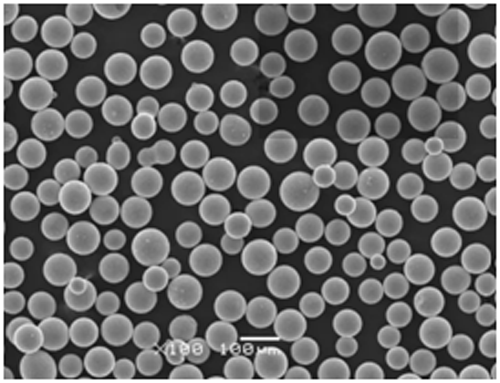

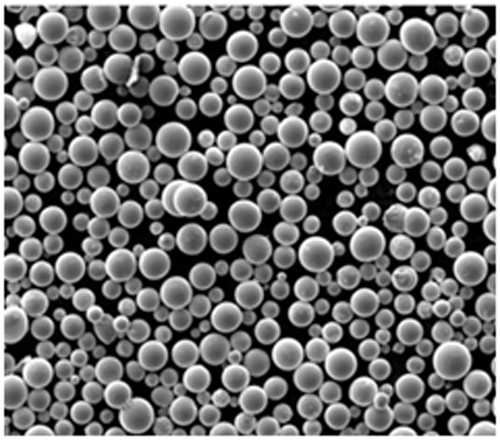
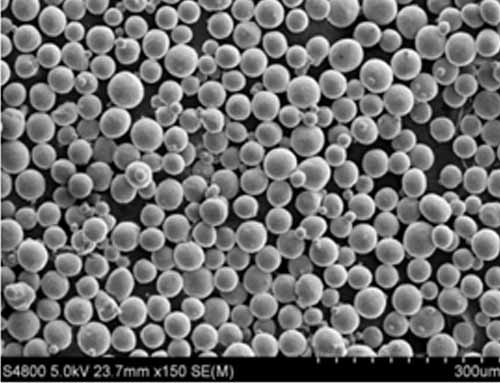
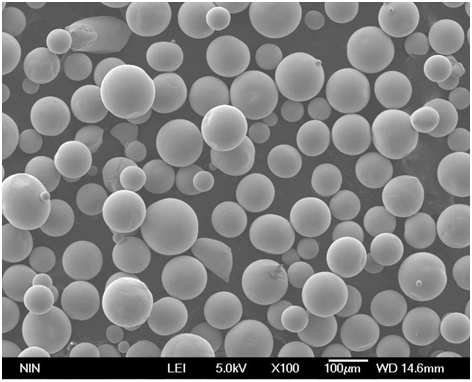
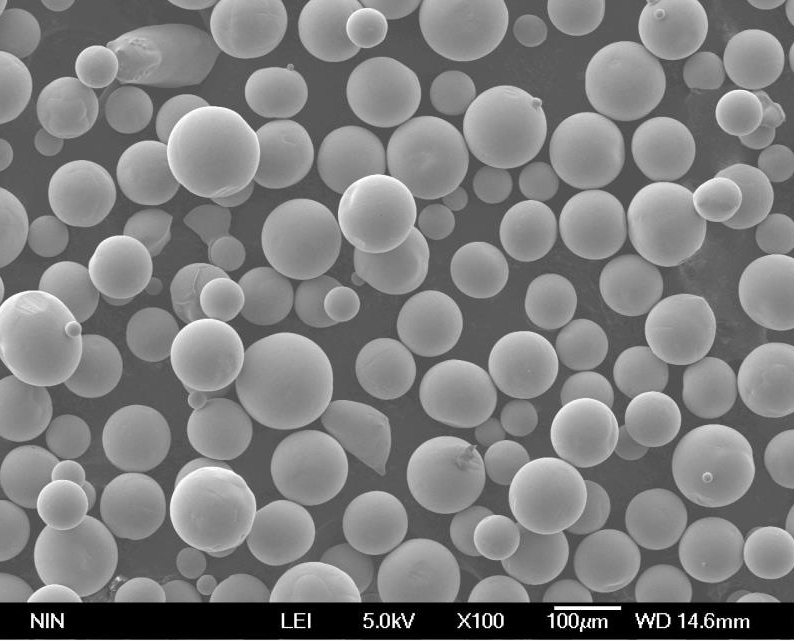
Especificaciones, tamaños, calidades y normas en el prototipado rápido por láser
Comprender las especificaciones, tamaños y calidades de los materiales utilizados en la PRL es esencial para seleccionar los materiales adecuados para su proyecto. A continuación encontrará una tabla detallada con algunas de las normas y especificaciones más comunes.
| Material | Estándar | Grado | Tamaño Disponibilidad |
|---|---|---|---|
| Acero inoxidable 316L | ASTM F138, ISO 5832-1 | 1.4404 | Tamaños de polvo: 15-45 µm, 45-100 µm |
| AlSi10Mg | ISO 3522 | 3.2371 | Tamaño del polvo: 20-63 µm, 63-150 µm |
| Inconel 718 | AMS 5662, ASTM B637 | 2.4668 | Tamaño del polvo: 15-53 µm |
| Titanio Ti6Al4V | ASTM F1472, ISO 5832-3 | 3.7165 | Tamaño del polvo: 15-45 µm |
| Cromo-cobalto (CoCrMo) | ISO 5832-4, ASTM F1537 | 2.4778 | Tamaño del polvo: 10-45 µm |
| Acero martensítico envejecido (MS1) | AMS 6514 | 1.2709 | Tamaño del polvo: 15-45 µm |
| Cobre (Cu) | ASTM B170 | C10100 | Tamaño del polvo: 10-45 µm |
| Hastelloy X | AMS 5754, ASTM B435 | 2.4665 | Tamaño del polvo: 15-45 µm |
Proveedores y precios Prototipado rápido láser Materiales
Elegir al proveedor adecuado para sus materiales de PRL es crucial para garantizar la calidad y la rentabilidad. A continuación encontrará una lista de proveedores reputados y un resumen de los precios.
| Proveedor | Material | Gama de precios (por kg) | Ubicación | Plazos de entrega |
|---|---|---|---|---|
| Tecnología Carpenter | Acero inoxidable 316L | $100 – $150 | EE.UU. | 2-4 semanas |
| EOS GmbH | AlSi10Mg | $120 – $170 | Alemania | 3-5 semanas |
| Höganäs AB | Inconel 718 | $250 – $300 | Suecia | 4-6 semanas |
| Arcam AB | Titanio Ti6Al4V | $300 – $400 | Suecia | 3-5 semanas |
| Sandvik | Cromo-cobalto (CoCrMo) | $200 – $250 | Suecia | 3-5 semanas |
| Aditivos GKN | Acero martensítico envejecido (MS1) | $180 – $220 | REINO UNIDO | 3-5 semanas |
| Tecnología LPW | Cobre (Cu) | $90 – $120 | REINO UNIDO | 2-4 semanas |
| Kennametal | Hastelloy X | $270 – $320 | EE.UU. | 4-6 semanas |
Comparación de los pros y los contras del prototipado rápido por láser
Ninguna tecnología está exenta de ventajas y desventajas. Vamos a sopesar los pros y los contras del prototipado rápido por láser para ofrecerle una visión equilibrada de lo que puede esperar.
| Pros | Contras |
|---|---|
| Fabricación de precisión: La PRL ofrece una precisión inigualable, por lo que es ideal para diseños intrincados. | Coste inicial elevado: El equipo y los materiales pueden ser caros, lo que puede resultar inviable para las operaciones más pequeñas. |
| Velocidad: El proceso es mucho más rápido que los métodos tradicionales, especialmente para piezas complejas. | Limitaciones materiales: No todos los materiales son adecuados para la PRL, y algunos pueden requerir un tratamiento posterior. |
| Versatilidad: Puede utilizarse en múltiples sectores y para diversas aplicaciones. | Limitaciones de tamaño: El tamaño de las piezas que pueden crearse está limitado por el volumen de fabricación de la máquina. |
| Reducción de residuos: Como proceso aditivo, la PRL minimiza los residuos de material, lo que la hace más sostenible. | Acabado superficial: Según el material y el proceso, las piezas pueden requerir un acabado adicional. |
Tendencias futuras en el prototipado rápido por láser
De cara al futuro, el prototipado rápido por láser está llamado a integrarse aún más en los procesos de fabricación. Las tendencias emergentes incluyen el desarrollo de nuevos materiales, la integración con la inteligencia artificial para la optimización del diseño y las mejoras en la velocidad y la eficiencia de los procesos. Además, a medida que bajen los costes, cabe esperar que la PRL se haga accesible a las empresas más pequeñas, ampliando aún más su impacto.
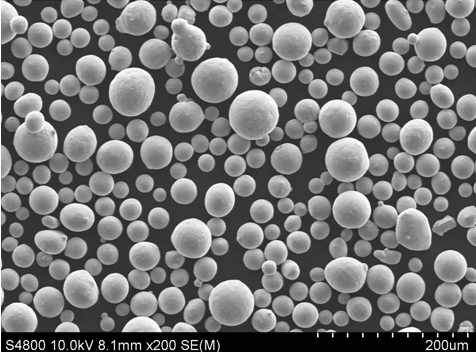
Preguntas más frecuentes
| Pregunta | Respuesta |
|---|---|
| ¿Qué es la creación rápida de prototipos con láser? | El prototipado rápido por láser es una técnica de fabricación aditiva que utiliza láseres para crear objetos en 3D a partir de diseños digitales mediante la superposición de material. |
| ¿Qué industrias utilizan PRL? | La PRL se utiliza en diversos sectores, como el aeroespacial, el de la automoción, el médico y el de la electrónica de consumo. |
| ¿Cuáles son las ventajas de la PRL sobre la fabricación tradicional? | La PRL ofrece tiempos de producción más rápidos, mayor flexibilidad de diseño y menos residuos de material en comparación con los métodos de fabricación tradicionales. |
| ¿Qué materiales pueden utilizarse en la PRL? | Puede utilizarse una amplia gama de materiales, como acero inoxidable, aleaciones de aluminio y titanio, entre otros. |
| ¿Es la PRL adecuada para la producción en serie? | La PRL suele ser más adecuada para la creación de prototipos y la producción de bajo volumen, pero los avances la hacen cada vez más viable para la producción en masa. |
| ¿Cuál es el coste de la PRL? | Aunque la PRL tiene un coste inicial más elevado, puede ser más rentable para diseños complejos o pequeñas series de producción debido a la eliminación de los costes de utillaje. |
| ¿Cuáles son las limitaciones de la PRL? | Entre sus limitaciones figuran los elevados costes iniciales, las restricciones de material y las limitaciones de tamaño de las piezas que pueden fabricarse. |
Conclusion
Prototipado rápido láser es algo más que una palabra de moda; es una tecnología transformadora que está cambiando las industrias. Tanto si se trata de crear piezas muy complejas como de reducir los residuos o simplemente de lanzar un producto al mercado con mayor rapidez, la PRL ofrece una serie de ventajas difíciles de ignorar. A medida que la tecnología siga evolucionando, sus aplicaciones no harán más que expandirse, convirtiéndola en una herramienta esencial para el futuro de la fabricación.

